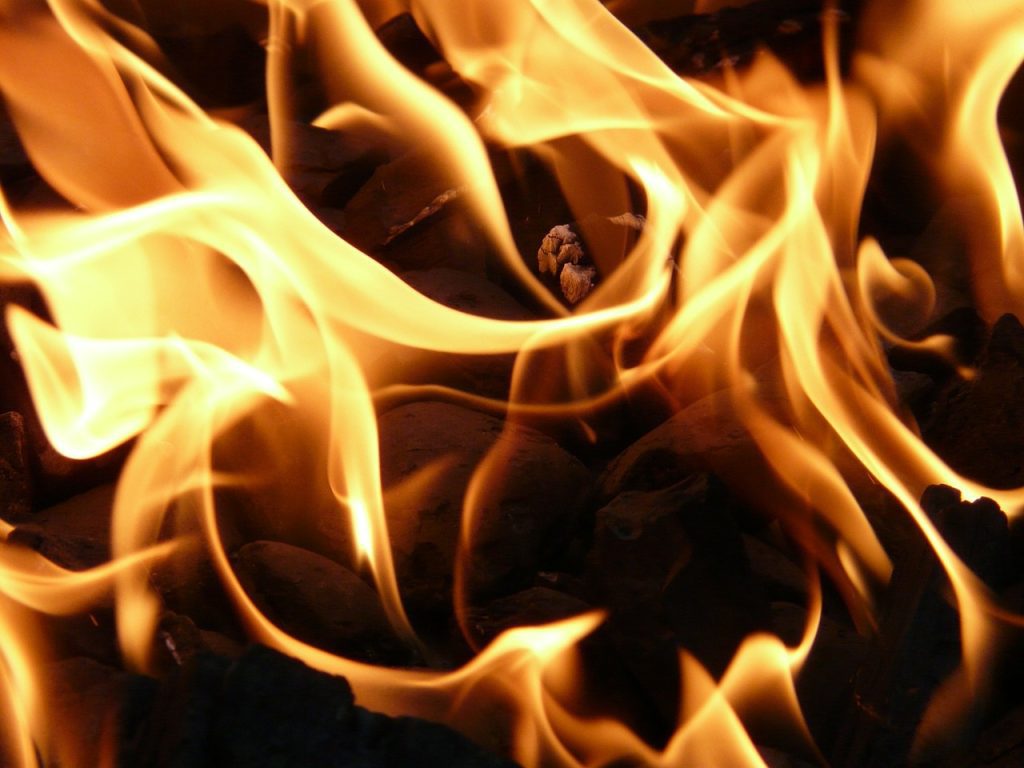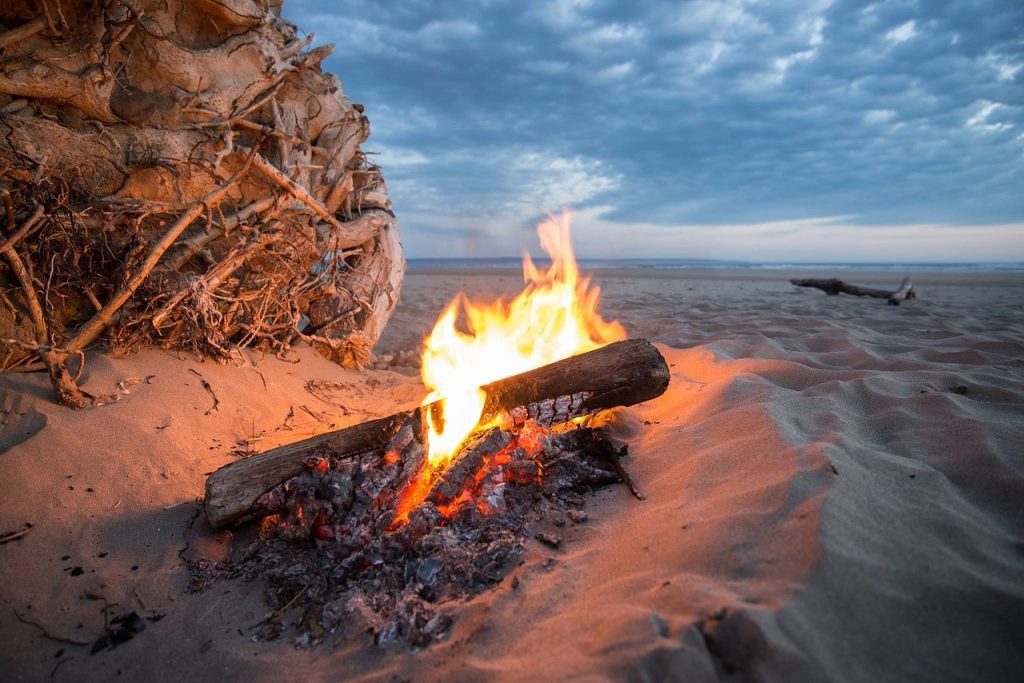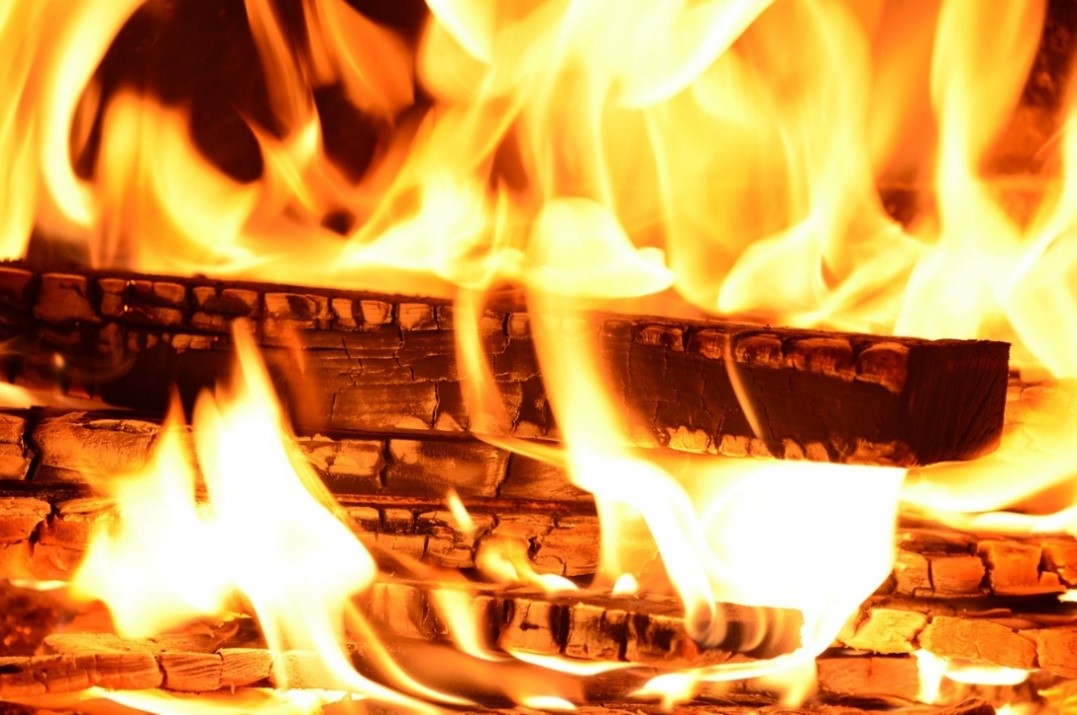Last Updated on October 12, 2022 by admin_hunter
Many tricks have been developed and polished over the years to keep a fire going. It is a critical survival skill because the fire will keep you warm, cook your food, make your water safe for drinking, scare away predators and provide a platform for bonding and strategizing your next moves on those long nights.
It seems to come naturally to some people. For most of us who are used to the comfort of our homes and hiring ‘experts’ for every task we are uncertain about, it presents a challenge.
Emergencies don’t always come with a warning (hardly ever), and it is not inconceivable that we may find ourselves in a situation that demands we tend to fire ourselves.
We may be dealing with countless variables in such circumstances that will need to be addressed in their own unique ways as no two fires are similar.
There is no comprehensive manual that will teach you how to keep a fire going in every possible situation. Sometimes you will need to improvise to deal with the prevailing conditions.
Fortunately, the basic elements involved in sustaining a fire are consistent and applicable to all fires. You just have to figure out how to channel what you have to make provisions for them. This article highlights these elements and how they factor in under different circumstances.
1. Fire Needs Oxygen
Fires require approximately 16% oxygen content to burn; it supports the chemical processes involved in combustion. The oxygen from the surrounding air supply reacts with the fuel to produce heat while generating byproducts like smoke and other gases in a process known as oxidation.
This explains why the intensity of the fire always seems to increase whenever you blow into it.
2. Fuel Sustains Fire
This is the combustible material consumed by the fire, whether it is tinder, kindle, or firewood. The more fuel you have, the longer you can keep a fire going strong.
The fuel condition affects the quality of fire and how much input will be required to sustain it.
Their shape, size, density, and moisture content determine how easy they will burn, if at all, and how long it will take to go through the pile.
3. There Is No Fire Without Heat
You need a heat source to ignite a fire in the first place. Most fire starters rely on friction for that initial flame, so a wet matchbox can’t be used to light a fire. The heat warms the surrounding air and the fuel, getting rid of moisture and allowing the fire to spread. The higher the temperature, the more efficient the fire is.
4. Less Is More
Smaller fires are more efficient than poorly burning large fires. They burn cleaner and produce more heat. If the fire is smoldering, there is a likelihood the wood is not being combusted properly. Part of the energy is lost with the smoke.
At the right temperature, even the largest logs will catch fire and burn well. If you build a fire to be too large at the beginning, you will end up using more of your kindling and smaller logs and may run out of firewood early. Your fire will also struggle to burn the larger logs because the heat will no longer be sufficient.

How Fire Burns
The above-mentioned attributes are hard to isolate as they influence the state of the fire concurrently, each affecting the other in the combustion process.
Because the fire needs oxygen, the air at the base of the fire will be sucked in, so you need to ensure adequate ventilation or a clear path to the fire base for air. Otherwise, you will get a lot of smoke and combustion gases, and your fire may gas out.
The heated air will rise, creating a vacuum which will cause a draft as more oxygen is sucked in. The rising hot air raises the temperature of the firewood, drying off any residual moisture content in the process and making it easier to burn.
This spreads the flame to the rest of the firewood in the fire pit, keeping the fire going. The burnt logs turn to hot embers, increasing the temperature, prompting more air to rise, and increasing oxidation.
Making Provisions for Air Circulation
We have already established that there has to be a continuous supply of oxygen to keep the fire going. Firewood arrangement in the fire pit or wood burning fireplace plays a big role in facilitating air circulation.
Add a few logs at a time, placing them in a way that they crisscross each other so that air can circulate around them, transferring the heat between them as they burn.
You can also arrange your firewood in a tipi design so that there are spaces for air circulation at the bottom. The firewood catches fire as hot air rises.
Keeping the Fire Burning During the Rainy Season
Wet wood causes the fire to struggle; it will start smoldering or even go off completely before the logs catch fire. Unfortunately, sometimes that is all you have, especially if it has been raining.
You end up using more energy to burn off the excess moisture first before the wood can be combusted.
Use extra tinder and kindling to combat any moisture if dry wood is not available. Our advice is to always carry your own emergency tinder to cover your bases because wet tinder will not light up.
If you are looking for tinder that you will be carrying along for emergencies, we have a treat for you. The Uberleben Tinder Wick and Bellow can burn continuously for 60 minutes and comes with a bellow to assist you in blowing air into that fire when you have inhaled enough smoke. You can also move it to whichever part of the fire you want to concentrate on.
Kindling also needs to be dry, and you will be disadvantaged if all the twigs you get are wet. Try shaving away the damp bark using a knife to expose the drier parts.
LIANTRAL Survival Camping Axe
- COMPLETE SURVIVAL AXE KIT – This survival axe includes the functions of chop, cut, split, chip, trim, open, scale, make fire, hammer, whistle, compass, etc. It can also be used as a tactical axe, it is a military portable folding axe with sharp blade, adjustable handles and a sheath. Great for anyone to use, survivalists, hunters, hikers, campers, first responder, gardeners.
- ADJUSTABLE LENGTH – The LIANTRAL camping axe designed with extension bars, you can adjust the length of the handle according to your needs. Compare to other axe, this folding survival axe combines axe, hammer, bottle opener, fish scaler tool, fire starter, emergency whistle, glass breaker, safety hammer, compass, hand rope, etc.
- QUALITY MATERIAL – The axe head is made of steel, the handle and extension bars are made of sturdy thick aluminum alloy. Designed and produced with the sports and outdoor enthusiast in mind. It is very suitable to be used as camping axe or camping hatchet.
- EASY TO CARRY – This folding axe comes in a sheath, amazingly compact and portable, thus makes this tactical axe the best emergency tool for outdoor camping, hiking and hunting. This multifunctional axe is also a perfect gift for your family and friends.
- Customer First – NOTE: this 18-in camping axe does NOT include a flashlight. Any issue about the product, please do not hesitate to reach out to us. We will be glad to assist you
The LIANTRAL Folding Survival Axe and Multi-tool is ideal for such a scenario. While the ax will be chopping the logs, it has a fish knife that can be applied to shave the bark off twigs and a magnesium rod capable of producing flames even in wet conditions. Waterproof matches, a lighter or flint, and steel are your best options for sparking a flame in these conditions.
If you have a hatchet or any other way to split the logs down the middle, it comes in handy as you can expose the dry inner parts, which will catch fire easier.
Lean the chopped logs together in a tipi formation with the dry inner bits facing the flame. Light your tinder and kindle in the middle. There will be enough air circulation at the bottom, and the flames will catch the dry bits of wood while drying the rest of it.
Keep your dry wood stock close to the fire so that there is plenty of time to warm up and reduce the moisture content before you need to use it. By then, it will have attained combustible temperature. You can wrap your extra wood in a towel to get rid of the excess moisture.
If the rain persists, create a cover use branches, tying them up in a structural way, or hang a tarp over your fire and logs to protect them from the rain. Ensuring it is far enough to prevent it from catching fire.
Fuel Economy
Sustaining a fire is a cycle. You start with tinder, then kindling, and then wood. Start with the smaller pieces of wood before getting to the larger logs when you have a good stable flame with some embers. You may have to repeat the cycle to keep the fire going if the conditions are harsh.
Tinder
This medium is used to start the fire because it catches fire easily and burns easily, even with a small spark. You can use dry leaves, dry bark, dry grass, wood shavings.
Occasionally you have to bring your own man-made tinder when the outside is wet, and these natural sources are not viable.
Kindling
Kindling is made of more substantial fuel sources and will sustain a fire to some extent. You can apply dried twigs, small pieces of wood, sticks, and broken tree branches.
The Firewood
Softwoods like pines and firs are preferred for starting a fire as they catch fire and burn quickly and produce a larger flame. This is important in the early stages of a fire and to rekindle a fire that is going off. They also burn down quickly and are therefore not ideal for sustaining a fire.
Hardwoods like ash, oak, maple, cherry, birch, and beech are denser and larger logs in size and will last longer before completely burning through. They produce more coal and less ash, resulting in a hotter fire.
You should not add your largest logs too early into the fire, though, as they require the temperature to be hot before they catch fire, and they are harder to light from a flame due to their large surface area. They can smother your fire.

As long as you are working with the four principles in mind, you will always figure out how to keep a fire going regardless of the adversities facing you.

